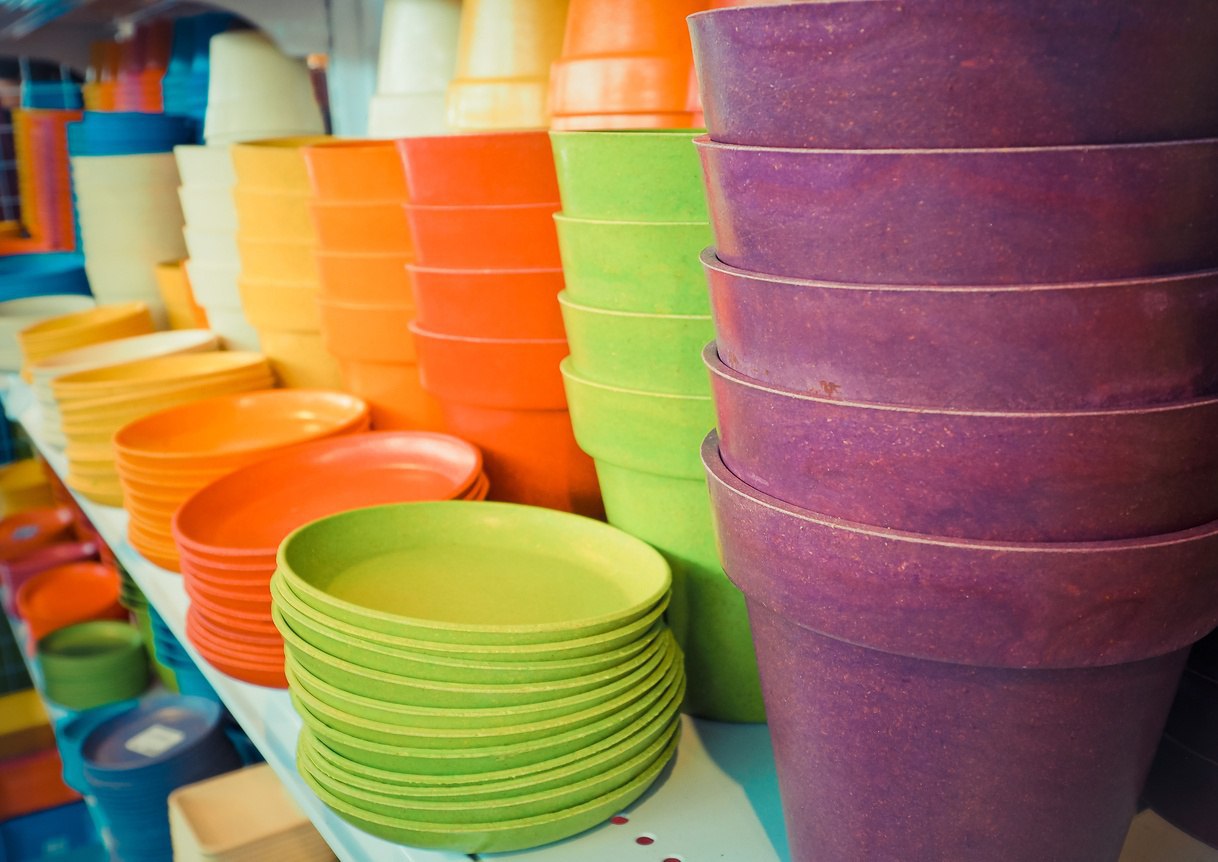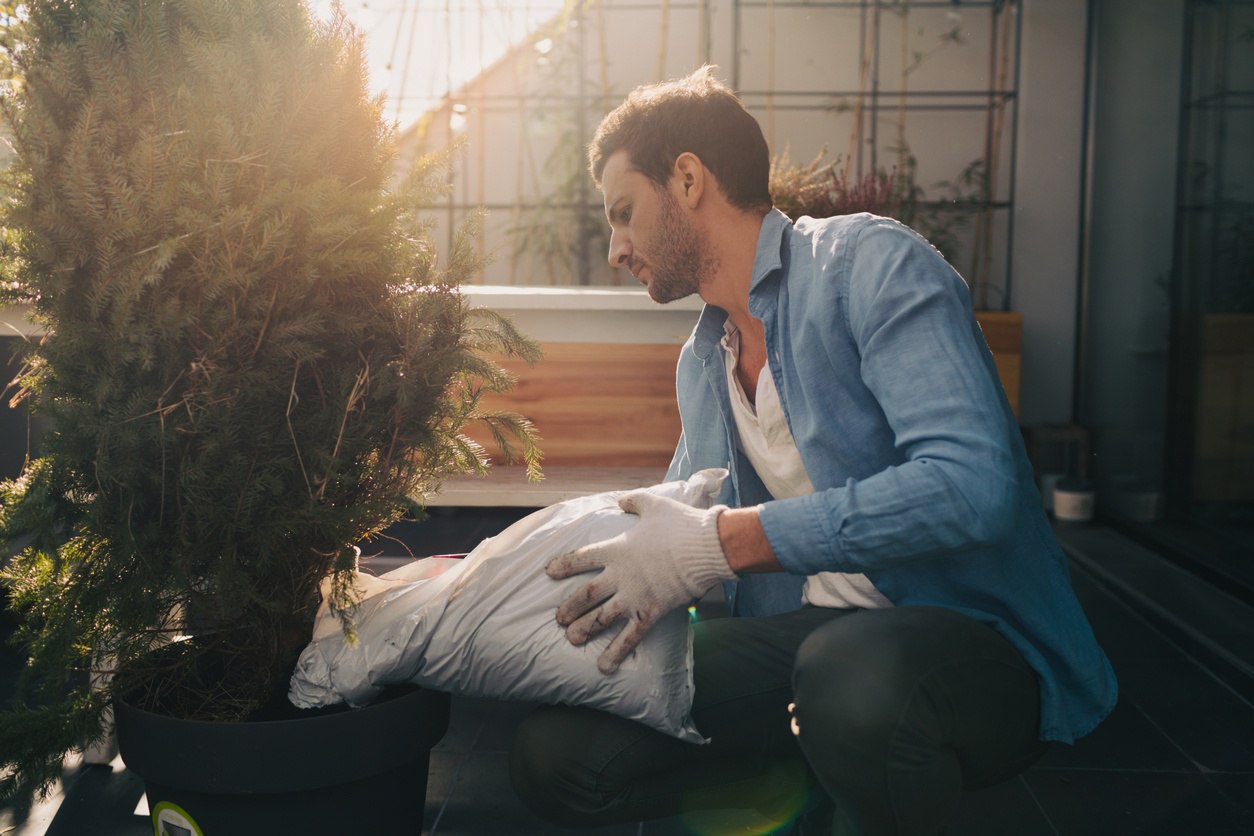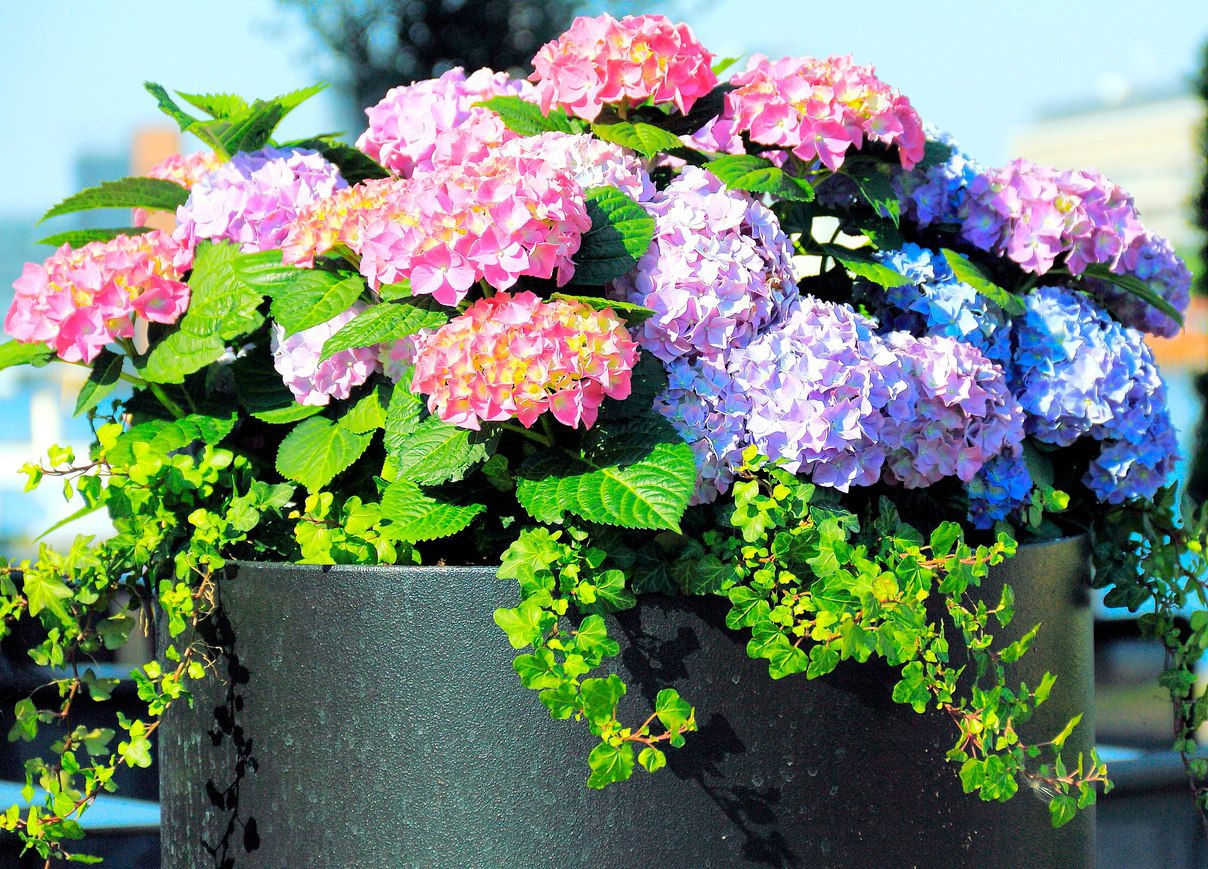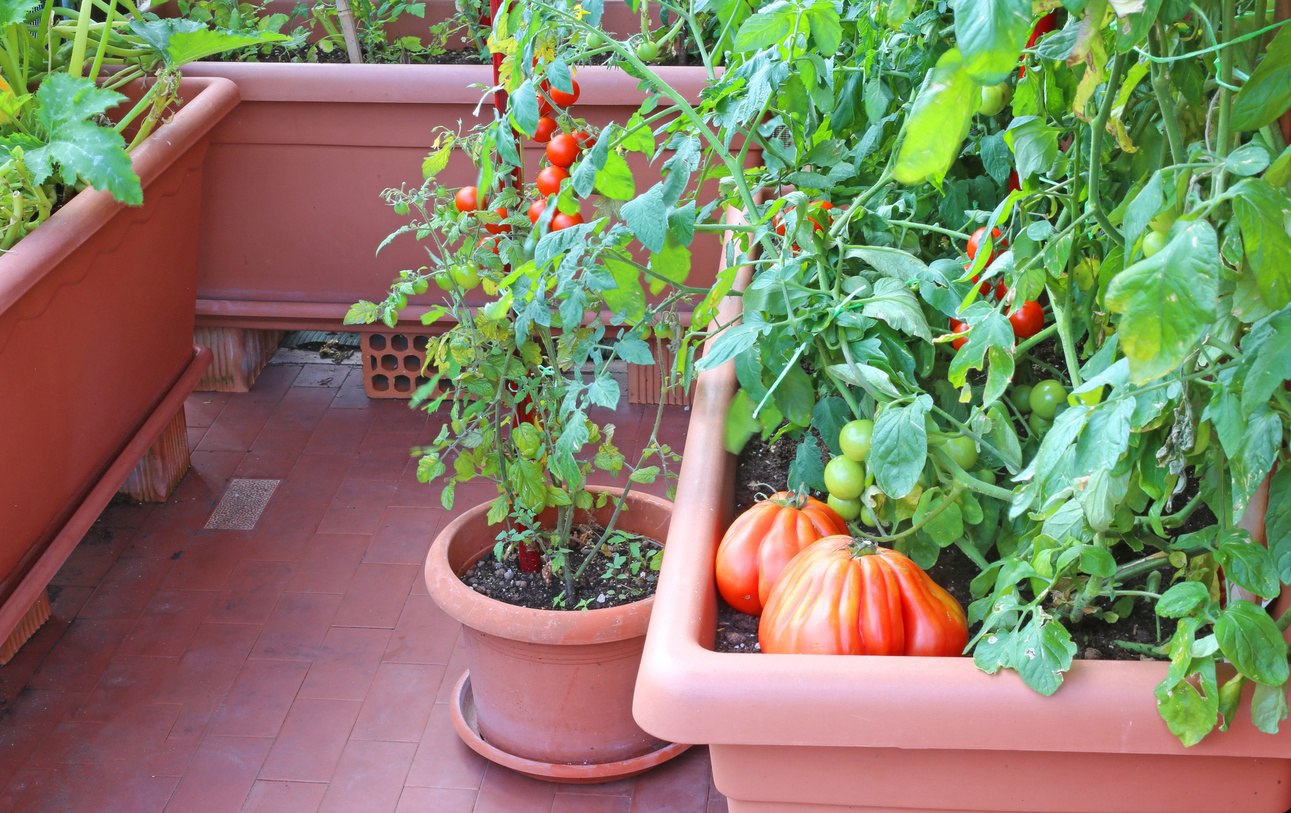Townhome and condo living doesn’t mean you have to surrender your affection for gardening. Decks, and even more expansive terraces now incorporated into the design of many urban townhomes and condominiums, are well suited for a rooftop garden where flowers, plants, ornamental trees, vegetables and herbs can be grown.
A rooftop garden can make a space pop and become an enjoyable and unique place to gather. Colin Kuhn, assistant general manager at American Plant’s Beltway location at River Road in Bethesda, offers some tips to help you make the best choices for your outdoor space.
From instruction on choosing the right containers, soils and fertilizers to tips on what plants grow best in this unique outdoor environment, Colin offers useful recommendations so your rooftop garden can thrive.
Are you transitional, contemporary, urban industrial or more of a minimalist?
Take our interior design style quiz to find out!
Locating Your Plants
Rooftop gardens can be used to create privacy, become a decorative focal point or to grow vegetables or herbs. Trees or taller plants in containers can be an excellent way to create privacy from neighbors or to block electrical, plumbing, building equipment and other unsightly views. At the same time, be careful not to impede nice vistas from seating and gathering areas.
.jpg?width=1166&name=iStock-475211098(2).jpg)
Container plantings can also help create the feeling of “rooms” on larger decks by dividing spaces into designated areas (i.e., dining area separated from a rooftop kitchen). Depending on size, your deck or rooftop terrace’s logistical design may limit options for placing containers. Be realistic about where pots fit and be sure to take into consideration factors such as wind and sun.
The windier your outdoor area, the more moisture plants will need. Windy environments dry out plant tissue more quickly and more moisture must be drawn from the soil.
Once you have an idea of where you want to place the containers, determine the amount of sunlight the plants will receive. This is imperative so the proper plants are selected for the container. In general, under six hours of sun is considered “part sun,” and six or more is considered “full sun.” Because summers in the DC area are humid, four to six hours of midday sun received any time between 11 a.m. and 5 p.m. can sustain a full sun plant.

Choosing a Container
Containers can hold annuals, perennials, shrubs, trees or even a mix of these plants but avoid overcrowding that causes plants to fight for moisture and nutrients. Trees and shrubs can often be planted with annuals placed toward the edges of the container to provide large greenery with pops of seasonal color.
Regardless of how you will use the containers (screen, privacy, focal point), it’s important to determine if your pot will be visible from all sides or from one main direction. This will help you determine how to situate plants in the containers to provide optimal visual impact for your and others’ enjoyment. You'll want to be able to see everything that is planted in the containers.
No matter what you choose to plant, containers with drainage are best because they allow you to choose the moisture level in the soil. Try to select the largest container the space can hold without impeding its functionality or the visual design you desire. Larger containers provide more flexibility in the plants you choose.
Below are a few tips on size and shapes of pots to consider when selecting your containers:
- Small trees and shrubs: Plant small trees and shrubs in containers that are twice as large as the root ball when the plant is purchased. Square and round pots are the best choice because they help roots to spread in all directions.
- Annuals and perennials: These are more flexible and, generally, can be planted in any shaped container.
- Herbs and vegetables: Rectangular pots are best as they allow for easier harvesting of herbs and vegetables.
As a rule of thumb, select containers at least 12 inches tall and wide for flowers. This will provide a minimum soil volume of one cubic foot, which helps prevent your base from drying too quickly during hot summer days. Similar choices apply for planting herbs and vegetables but each plant -- eggplant, tomato, pepper, squash, etc. -- will require at least one cubit foot of soil per plant.

Selecting Soil
Potting soil is always best for growing potted plants in rooftop gardens. It’s light and drains well, which makes the soil more forgiving in instances where plants are over watered.
If you face the opposite issue and the soil dries out, it will take multiple waterings to completely re-hydrate the plants. Soil moisture meters work well and allow you to check levels at the middle of the pot vs. the top or side. If you don’t use a meter, digging down a little on the side of the pot helps you to determine moisture at deeper levels.
Fertilizing Your Plants
Root stimulant fertilizers are great for new root growth in plants and a must for container gardening because watering constantly flushes nutrients from potting soil.
For some, synthetic fertilizers are the best choice for rooftop gardening because they release nutrients at a faster rate and are more viable for plants’ use when needed.
A natural fertilizer works well if you don’t mind a little extra work to keep up with nutrient loss. Natural choices are best for herbs and vegetables since they will be consumed for eating.

Choosing Your Plants
Once you have selected the location and containers for your rooftop garden and purchased potting soil and fertilizer, it’s time to pick plants and get to work! Below, Colin provides valuable guidance on selecting plants for your outdoor area.
Annuals and Perennials
Annuals (flowers and plants with a life cycle of only one year) work great in rooftop gardens because they provide lots of seasonal color and impact and are generally low maintenance plants.
They take well to growing in pots and wide varieties of these flowers are available for any container location. Choices can be matched to any condition: hot, dry, sunny and shaded. Larger containers with annuals generally will require less watering because of the increased soil volume for annuals.
While perennials (flowers and plants that bloom year after year on their own) prefer the ground, certain perennial flowers don’t mind being in containers. These include: grasses, salvias, coneflowers, coreopsis, dianthus, lavender, hardy geraniums, hostas, heuchera and ferns.
The larger the container for perennials, the more likely they are to survive through the winter and come back next year. Larger soil volume helps to prevent faster temperature fluxuations and protect roots of perennials during the winter.
Trees and Shrubs
Many people love to incorporate ornamental trees and shrubs on rooftop terraces and balconies as their constant, and in general larger presence, helps to create focal points, provides greenery for a welcoming environment and offers screening for privacy and unsightly building equipment.
Like perennials, trees and shrubs do best in the ground but some varieties work in containers as well, including: boxwoods, hollies, Japanese maples, laurels, hydrangea, nandina and many conifers.

Vegetables
Vegetables need full sun – at least six hours – to do well and require one cubic foot of soil per plant. The right amount of soil ensures proper moisture and nutrient levels and longer rectangular boxes are great for harvesting and maintenance.
Because vegetables require more care than most other plants, be sure to place them in accessible areas of your outdoor space.
Tomatoes are the most popular vegetable for home gardeners. Make sure to use a tomato-specific fertilizer (either synthetic or natural). Tomatoes require extra calcium to help prevent blossom end rot and other common disease issues.
Other top vegetable choices for rooftop gardening include peppers, eggplant and squash.
Herbs
A popular growing choice with gourmands and foodies, herbs can easily be planted in ornamental rooftop containers. And upright herbs, such as rosemary, sage, lavender and various types of basil, can be used as larger foliage plants in mixed plant containers.
Oregano and thyme are great options for plants to trail out of containers providing visual interest while still being available to harvest for cooking.
Mint should be planted by itself and is one herb that does not do well in mixed containers because it can take over other plants.
For more plant and rooftop gardening advice, stop in at American Plant’s two locations in Bethesda: 5258 River Road (Westwood) or 7405 River Road (at the Beltway). Or visit www.americanplant.net.
Happy rooftop gardening!


